Discover how a bimodal integration strategy can address the major data management challenges facing your organization today.
Get the Report →Create Adobe Analytics Dashboards in Bold BI
Use CData Connect Server to create a virtual SQL Server Database for Adobe Analytics data to build custom dashboards in Bold BI.
Bold BI allows you to create, share, and collaborate on interactive BI dashboards. When paired with CData Connect Server, you get instant access to Adobe Analytics data for visualizations, dashboards, and more. This article shows how to create a virtual database for Adobe Analytics and build reports from Adobe Analytics data in Bold BI.
CData Connect Server provides a pure SQL Server interface for Adobe Analytics, allowing you to easily build reports from live Adobe Analytics data in Bold BI — without replicating the data to a natively supported database. As you build visualizations, Bold BI generates SQL queries to gather data. Using optimized data processing out of the box, CData Connect Server pushes all supported SQL operations (filters, JOINs, etc) directly to Adobe Analytics, leveraging server-side processing to quickly return the requested Adobe Analytics data.
Create a Virtual SQL Server Database for Adobe Analytics Data
CData Connect Server uses a straightforward, point-and-click interface to connect to data sources and generate APIs.
- Login to Connect Server and click Connections.
![Adding a connection]()
- Select "Adobe Analytics" from Available Data Sources.
-
Enter the necessary authentication properties to connect to Adobe Analytics.
Adobe Analytics uses the OAuth authentication standard. To authenticate using OAuth, you will need to create an app to obtain the OAuthClientId, OAuthClientSecret, and CallbackURL connection properties. See the "Getting Started" section of the help documentation for a guide.
Retrieving GlobalCompanyId
GlobalCompanyId is a required connection property. If you do not know your Global Company ID, you can find it in the request URL for the users/me endpoint on the Swagger UI. After logging into the Swagger UI Url, expand the users endpoint and then click the GET users/me button. Click the Try it out and Execute buttons. Note your Global Company ID shown in the Request URL immediately preceding the users/me endpoint.
Retrieving Report Suite Id
Report Suite ID (RSID) is also a required connection property. In the Adobe Analytics UI, navigate to Admin -> Report Suites and you will get a list of your report suites along with their identifiers next to the name.
After setting the GlobalCompanyId, RSID and OAuth connection properties, you are ready to connect to Adobe Analytics.
![Configuring a connection (SQL Server is shown).]()
- Click Save Changes
- Click Privileges -> Add and add the new user (or an existing user) with the appropriate permissions.
With the virtual database created, you are ready to connect to Adobe Analytics data from Bold BI.
Visualize Live Adobe Analytics Data in Bold BI
The steps below outline connecting to CData Connect Server from Bold BI to create a new Adobe Analytics data source and build a simple visualization from the data.
- Log into your Bold BI instance, click the data sources tab, create a new data source, and choose the SQL Server connector.
- Choose the basic configuration and set the connection properties:
- Name: Name your connection
- Server name: Your Connect Server instance (CONNECT_SERVER_URL)
- Port: 1433
- Username: Your Connect Server username
- Password: Your Connect Server password
- Mode: Choose Live to query Adobe Analytics on-demand or choose Extract to load the data into Bold BI
- Database: Choose the database you created from the drop-down menu (adobeanalyticsdb)
- Click Connect
- Select the table to visualize and drag it onto the workspace.
- Select a visualization style and add it to the report.
- Click the gear icon for the visualization to configure the visualization properties and assign columns to the visualization.
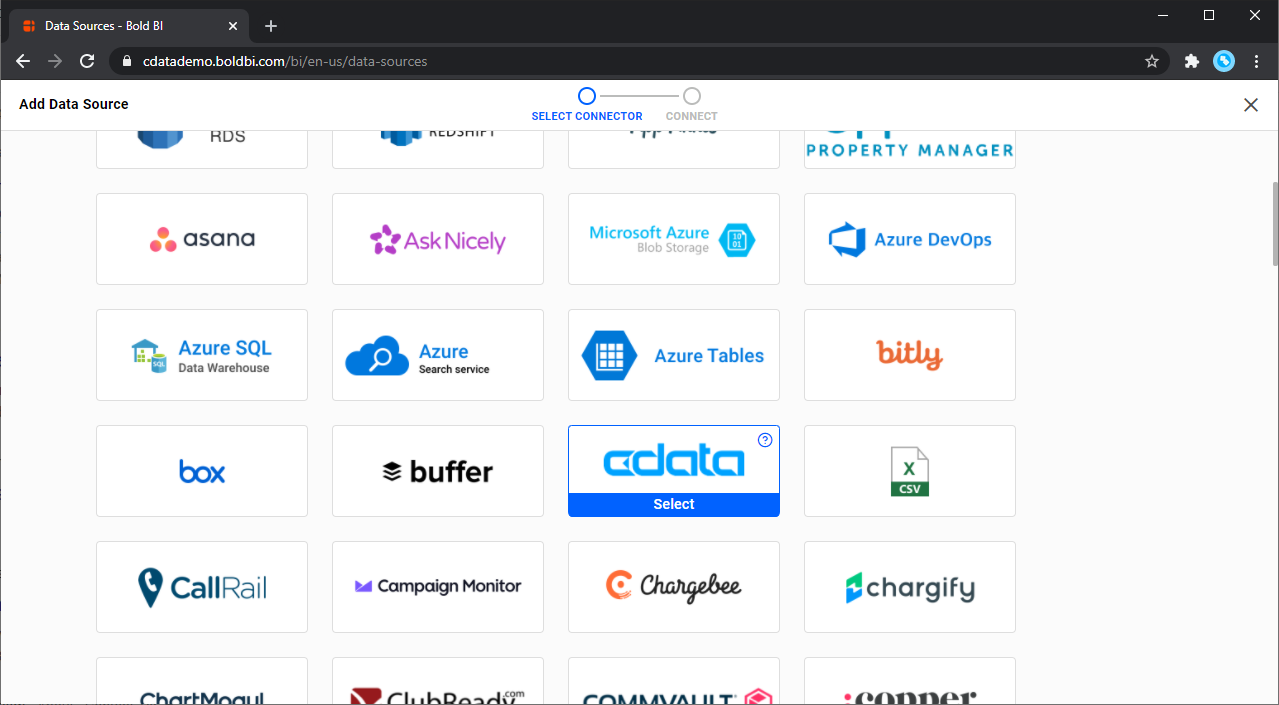
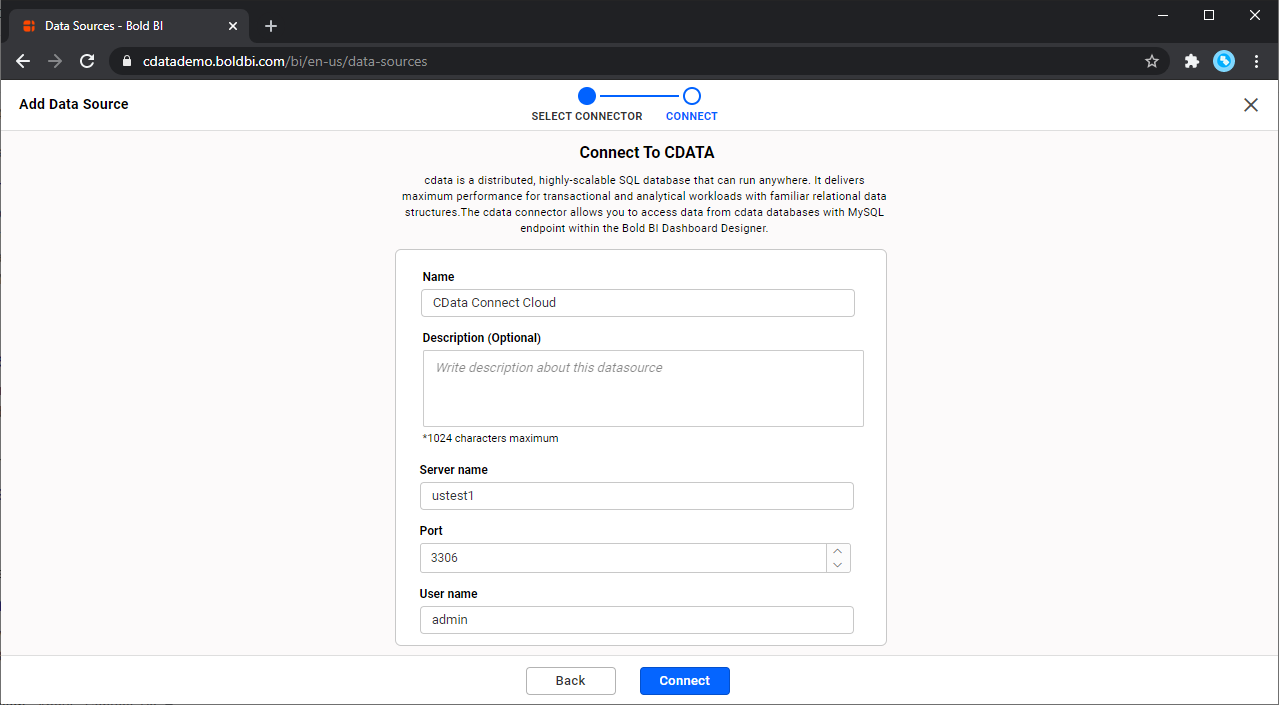
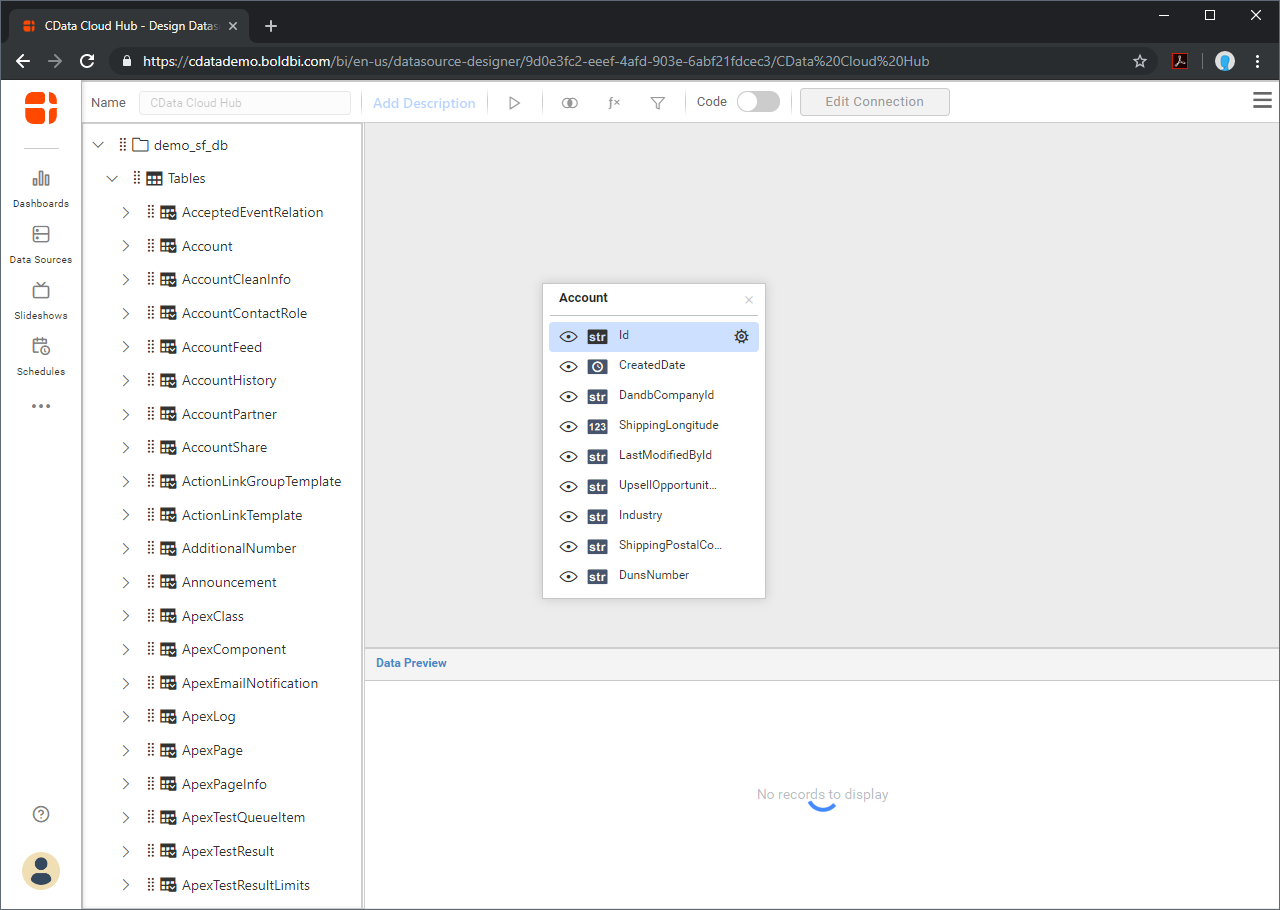
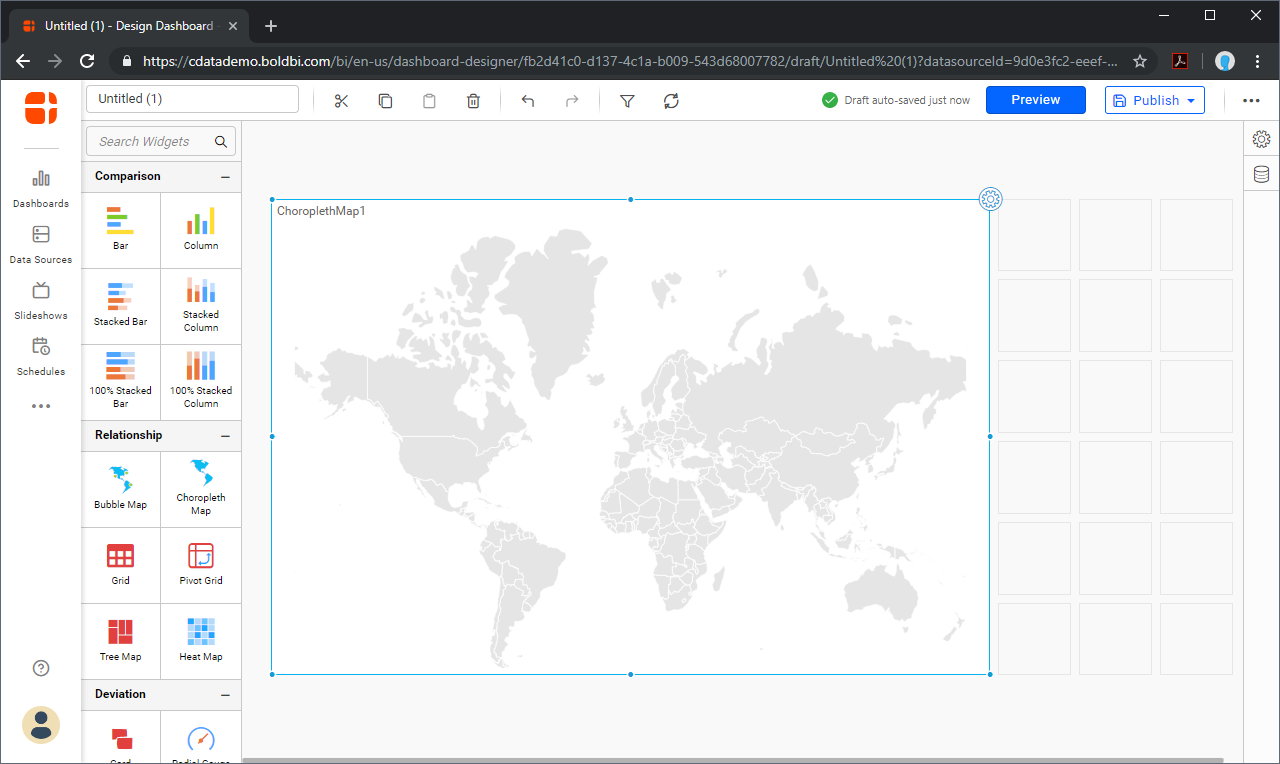
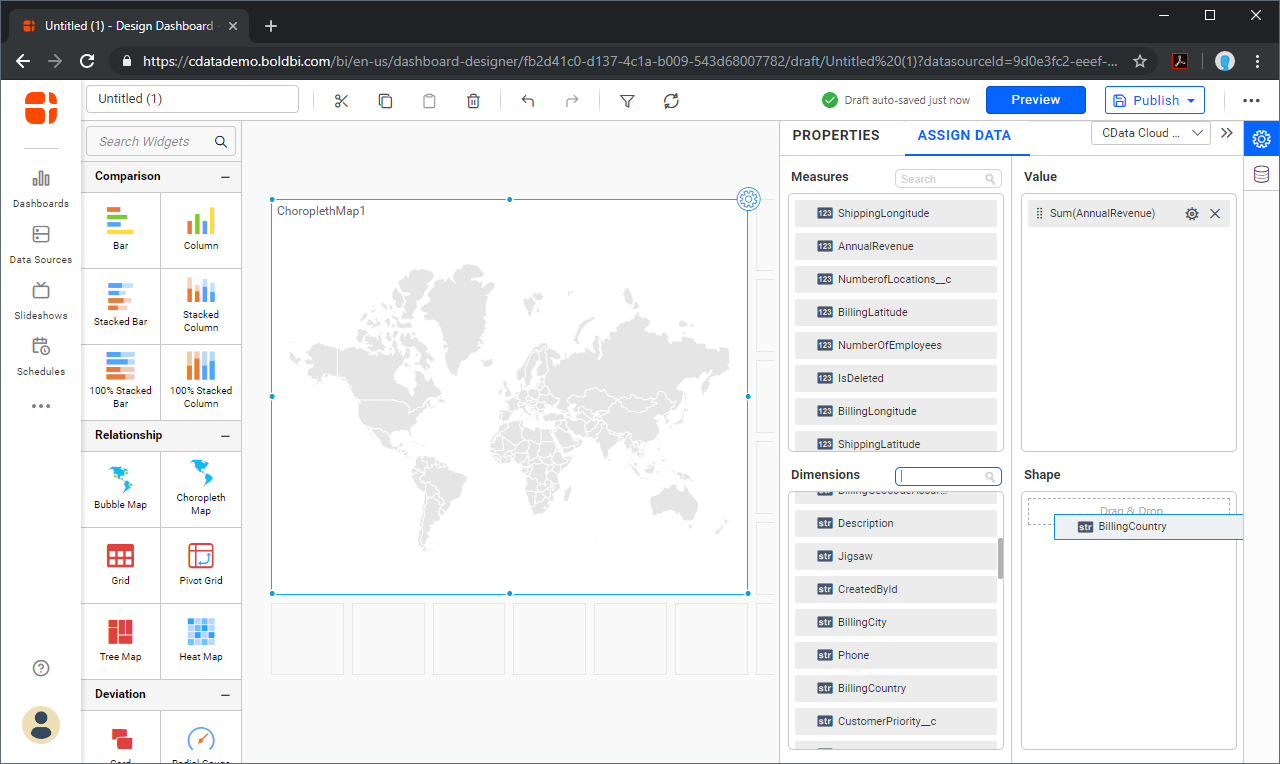
SQL Access to Adobe Analytics Data from Applications
Now you have a direct connection to live Adobe Analytics data from your Bold BI workbook. You can create more data sources and new visualizations, build reports, and more — all without replicating Adobe Analytics data.
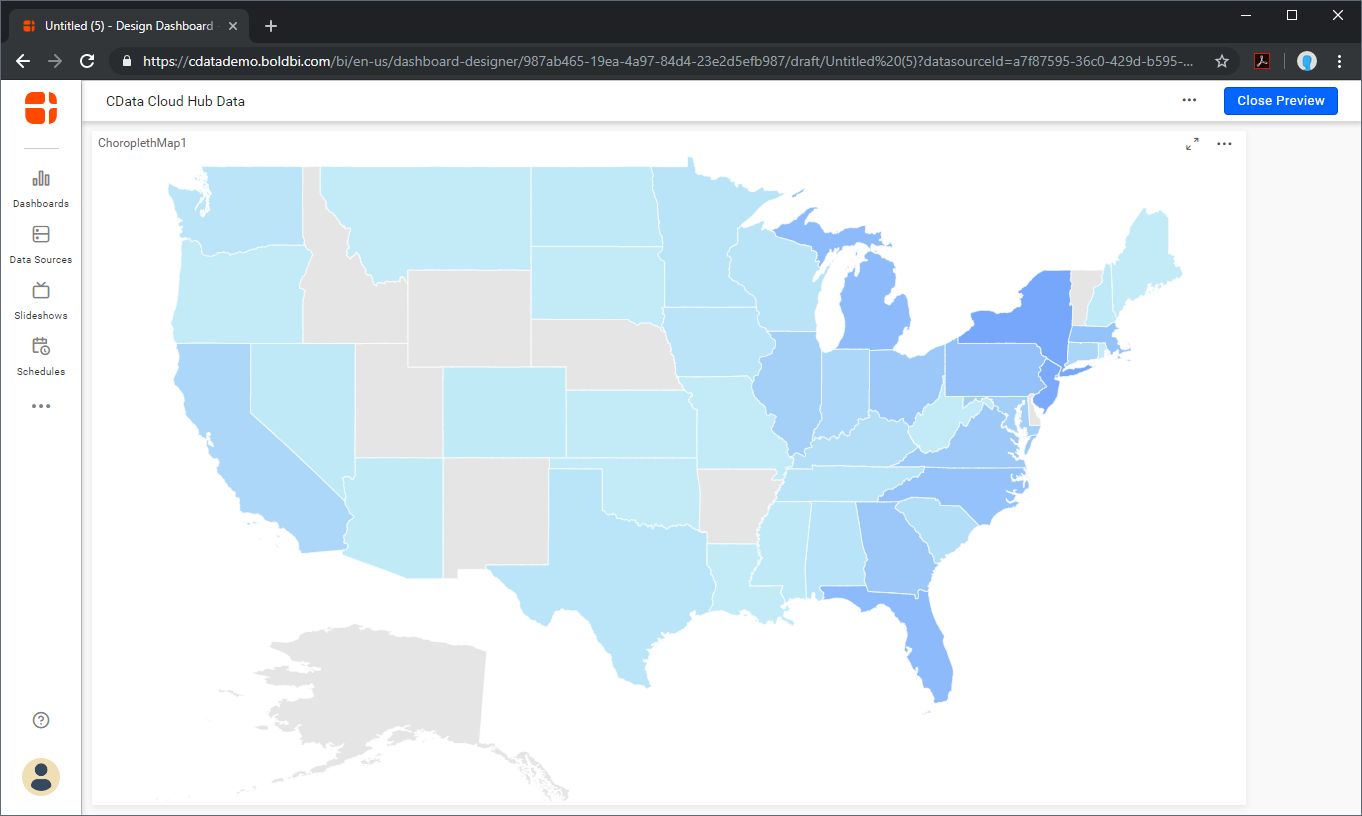
To get SQL data access to 200+ SaaS, Big Data, and NoSQL sources directly from your applications, see the CData Connect page.








